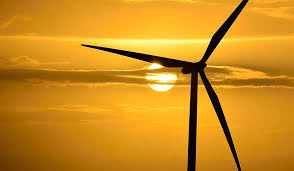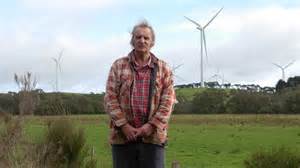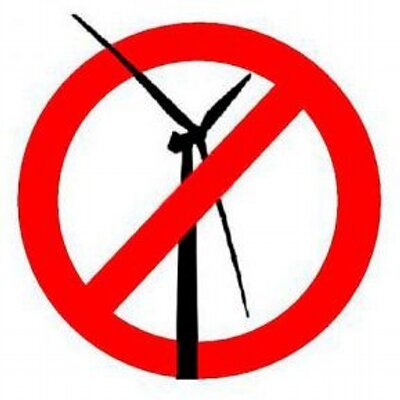“The people whose well water has apparently been impacted during and following the construction of Industrial Wind Turbines in our part of Chatham-Kent need to know if their drinking water is actually safe to drink, cook with and to use for bathing as well as feed to their fuzzy friends and livestock. Your financial assistance will make this possible.”
Christine Burke
Please consider making a donation at: Gofundme
My name is Christine Burke and I’ve been married to my husband Terry for 39 years. We live in a rural century home in the former Township of Dover, now part of the municipality of Chatham-Kent, in Ontario. Terry was born and raised in our home as was his father, Wayne. Grampa and Gramma lived to the ages of 99 and 94 drinking, cooking, bathing and laundering with their crystal-clear well water that is sourced from the thousands-of-years-old aquifer that underlies much of Chatham-Kent. We raised our children with the same water, from the same well.
Then in 2009, Boralex started construction on top of this “highly vulnerable aquifer” and between 2012 and 2013, fifty-five more Industrial Wind Turbines were constructed in Dover by GDF Suez (now Engie Canada) and at that time our well water turned black. We are not the only family that had their well water impacted in the same way. The discoloration and increased turbidity of our well water and that of other families is due to an increased amount of very fine-grained sediment within the water. The presence of that sediment was, and remains extremely worrisome from a health perspective because it is known to include a component of very fine clay- and silt-sized particles that are likely derived from a metals-rich black shale.
Because of what had happened in Dover we warned our municipal and provincial governments that if the thirty-four wind turbines of the proposed North Kent 1 Industrial Wind Complex were permitted to be built in 2017, on the same aquifer that was impacted in Dover, more families in Chatham-Kent were going to experience interference with their well water resulting in the presence of metals-rich sediment. And sadly, it happened just as we said it would, just as we predicted. It was a heartbreaking experience to wait, watch and witness families as they saw the quality and possibly the potability of their well water destroyed during the construction and operation of yet more Industrial Wind Turbines.
On May 5, 2018, the Premier of Ontario, Doug Ford, promised in writing a Health Hazard Investigation of well water which was then reduced to an All Hazard Investigation, two different protocols. In the end, the All Hazard Investigation was confined to the North Kent 1 Industrial Wind Complex and we, the impacted families living in Dover and within the footprint of the earlier Industrial Wind developments, were excluded.
Furthermore, the Investigation in North Kent 1 failed at one of its primary objectives which was to sample and analyze the sediment that is causing the discoloration and turbidity of the water from many wells and that is known to contain potentially toxic substances.
The Expert Panel that advised the All Hazard Investigation explicitly recommended, in its Report, that further studies of the well water should be carried out including the analysis of the sediment contained therein. To this date, no elected official or government agency has indicated their intention to sample and analyze the sediment.
In the absence of any government action upon the recommendation of the Expert Panel to analyze sediment from well water, our household proceeded to have such work done on a sample taken from our own well. With the help of friends, family and some people we have never met, we had sediment from our well water analyzed at an accredited laboratory. The results indicate that the particles of clay- and silt-sized sediment (not “sand”, as previously stated by Chatham-Kent’s Medical Officer of Health, Dr. David Colby) contains concentrations of potentially toxic metals including Antimony, Arsenic, Barium, Cadmium, Lead and Nickel.
Those results are especially alarming because we, and other residents are not able to filter the extremely fine, clay- and silt-sized metals-rich particles from our domestic water supplies.
Our concern is that there may be other rural residents drinking, cooking or bathing with well water that might contain similar, potentially toxic sediment. They may also be feeding it to their pets and/or livestock thinking it to be safe. It is urgent that more households carry out the type of analyses we recently completed in order to make informed decisions on the quality of their domestic water supply.
The laboratory analysis, approximately US$685 per sample, along with the additional expense of an accredited hydrogeologist to retrieve the water samples, represents an expense that is beyond the reach of many families. Therefore, we hope to raise funds to help other residents to defray all or part of the costs of analyses for potentially toxic metals in their domestic water supply.
With your donation, we can follow through with the crucial analytical work that our governments have failed to do. The people whose well water has apparently been impacted during and following the construction of Industrial Wind Turbines in our part of Chatham-Kent need to know if their drinking water is actually safe to drink, cook with and to use for bathing as well as feed to their fuzzy friends and livestock. Your financial assistance will make this possible.
Thank you so very much for any help you can provide.
Following is a link to a slide show providing background information on the water well situation in Chatham-Kent.
https://drive.google.com/file/d/1pQYzyJQvACv3nrxC72bEnftlyS3giiNO/view?usp=sharing








 READ
READ 